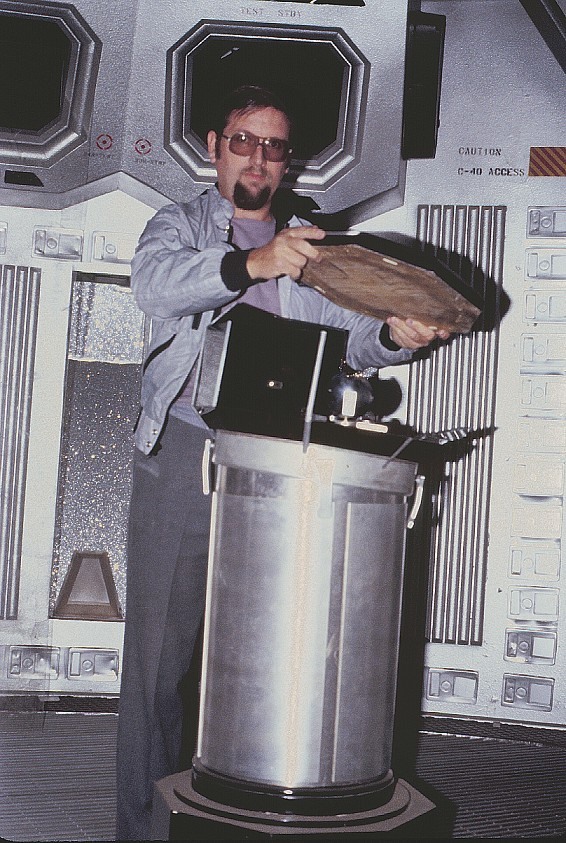Antimatter Production (or
regeneration):
ODONA: Can you make it last a long, long time?
KIRK: How long would you like it to last?
ODONA: Forever.
KIRK: Well, let's see.
Power, that's no problem, it regenerates.
Could the
dilithium crystal be the main element of this system, too? Dilithium, meaning it consists of two lithium atoms. Maybe one is matter and the other is anti-matter, subatomically separated in a stable crystalline matrix so the two atoms do not annihilate each other. When “energized” (don’t know with what, i.e. electrons, positrons, up or down quarks, magnetic fields, gamma rays, etc.), the dilithium crystal has the unique property to absorb
and convert matter through subatomic charge transference into anti-matter. The dilithium crystal can be in either its natural crystalline form or processed into a paddle shape. Up to four dilithium crystals are connected in parallel inside the Dilithium Crystal
Convertor Assembly (DCCA). Focused streams of matter and antimatter are injected each onto opposite surfaces or facets of an energized dilithium crystal. In addition to controlling the annihilation process, the M/AM reaction energy keeps the crystal energized to allow the excess matter to be absorbed interstitially into the crystal matrix and
converts the matter into antimatter. This potion of the DCCA is controlled by the matter-antimatter integrator which also magnetically extracts the now excess (
regenerated) antimatter from the crystal then magnetically transfers it up to the warp nacelles for use in the warp engine M/AM reactors (no dilithium), recycles it back into the DCCA, or stores it in the antimatter confinement pod in each nacelle and in the one down below in the engineering hull. Once the reaction starts, the ship only needs to feed enough matter into the system to make up the losses from the M/AM annihilation in the three reactors. To refill the matter fuel, the Enterprise sucks it in from interstellar gases especially when near stars.
Remember, the M/AM reaction is what makes the magic work.
Shut down the dilithium crystals, you shut down the warp drive and the warp power it feeds into the ship EPS by starving the M/AM reaction of AM fuel. Turn it on full blast into the warp engines with no antimatter bypass control (TWS), you need to burn it as fast as you can or you blow up due to the excess AM build-up in the reactors. Cut off the AM to the crystal, the crystal shuts down and no more AM is made to blow you up. You don't want to shutdown the matter fuel side or you blow up since it is needed to burn the residual AM still in the system. I think I just solved the sabotage scenario in
That Which Survives!




 Assuming my dilithium crystal theory is close to being correct, then it can also explain why the dilithium crystals are needed to bridge the dimensional transport to and from the Antimatter Universe in the hokey The Alternative Factor.
Assuming my dilithium crystal theory is close to being correct, then it can also explain why the dilithium crystals are needed to bridge the dimensional transport to and from the Antimatter Universe in the hokey The Alternative Factor.









